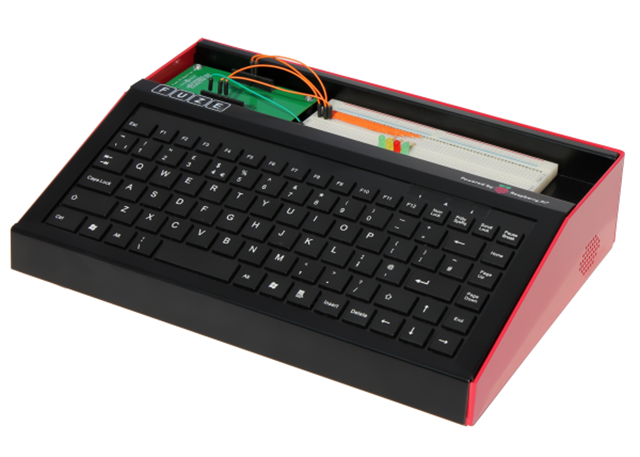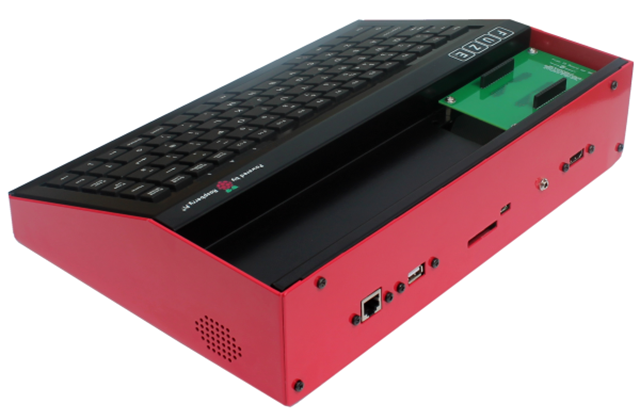Taking programming back to the 1980s -- hands on with the FUZE [Review]

Back in the late '70s at the tender age of 19 or so I learned to program in COBOL on a system that used punched cards -- a Sperry UNIVAC for those who care about these things. There was no instant gratification to be had with this method, non-essential (i.e. student) programs were run as overnight batches so you had to submit the cards holding your carefully-crafted code in a cardboard box. You went back the next morning (OK, afternoon) to collect your output which, naturally, came on blue and white striped continuous paper.
The next generation were able to learn the joys and frustrations of writing code in the comfort of their own bedrooms and lounges thanks to home machines that ran BASIC, no longer did it take 24-hours to fix a bug. Today though affordable PCs and off-the-shelf software for just about any purpose mean that everyone can use a computer without having any need to understand what makes it work.
Whilst that's good in many ways it also means that the next generation of programmers and analysts aren't getting a grounding in creating code at an early age. As we saw in our Q&A last month, the makers of the FUZE are out to change all that and now we've got our hands on a review unit.
Receiving the FUZE is in itself like a trip back to the 1980s -- but without the shoulder pads. It comes packed in sturdy cardboard and everything you need, bar a monitor, is in the box. The computer itself feels solid and well-built with its aluminium case and you get a wireless mouse with a FUZE-branded mat, an SD card, a spiral-bound BASIC guide and a box of electronic components -- more on those later.
Setup is simple, connect a screen to the HDMI port, insert the supplied memory card, plug in the power lead and away you go. Because it's based on the Raspberry Pi there's no long boot up process and it's ready to use in under a minute. The initial desktop has icons for FUZE BASIC, FUZE and Apps. The FUZE folder contains a number of project cards which start you off with simple programming tasks. More cards will be made available to download as the system develops. The Apps folder holds the standard Linux programs and utilities of the Raspberry Pi.
The FUZE isn't just about BASIC programming though, which brings us back to that box of resistors and other electronic bits that comes as part of the package. Just above the keyboard there's a panel with lots of little holes in it which the makers refer to as a 'breadboard'. As you work your way through the project cards you'll start to encounter ones that get you to connect wires, miniature buzzers, LEDs and so on, then program them via the computer to create patterns of flashing lights and other tasks. It's simple stuff but a good introduction to the practical side of getting computers to do actual, physical tasks.
 A lot of thought has gone into the FUZE and the result is a well-rounded product with, for the most part, robust construction. It would be nice to have a power switch instead of having to mess with a fiddly miniature USB connector each time you need to reboot but that's a minor quibble.
A lot of thought has gone into the FUZE and the result is a well-rounded product with, for the most part, robust construction. It would be nice to have a power switch instead of having to mess with a fiddly miniature USB connector each time you need to reboot but that's a minor quibble.
The FUZE is aimed at schools but it's relatively inexpensive if you want to give your kids a grounding in the computing dark arts at home. Should you already have a Raspberry Pi you can buy the case and electronics bits separately, see the shop section of the FUZE website for details. The best part about it though is that, as with all the best educational tools, it's just darned good fun. It beats leaving punched cards in a cardboard box any day. Now, where are those LEDs...